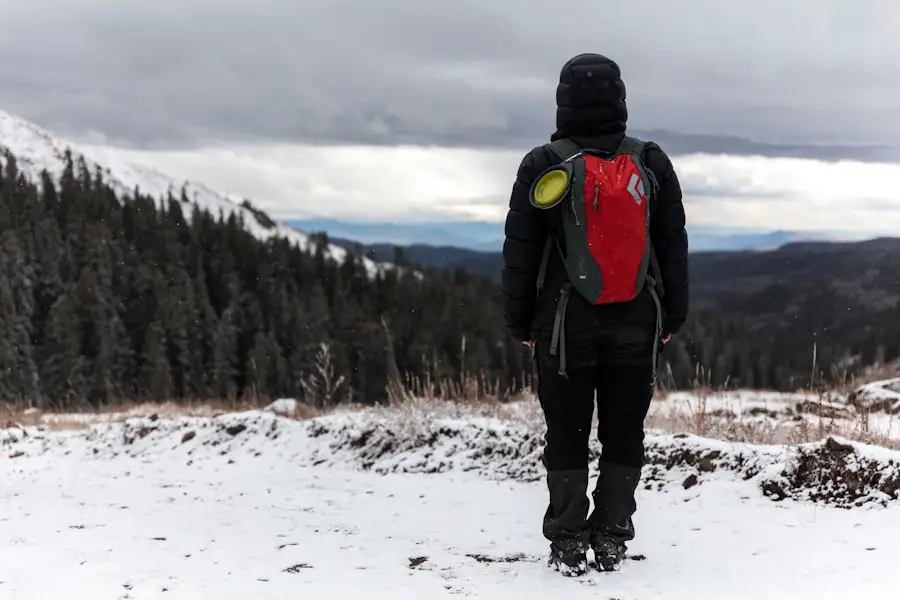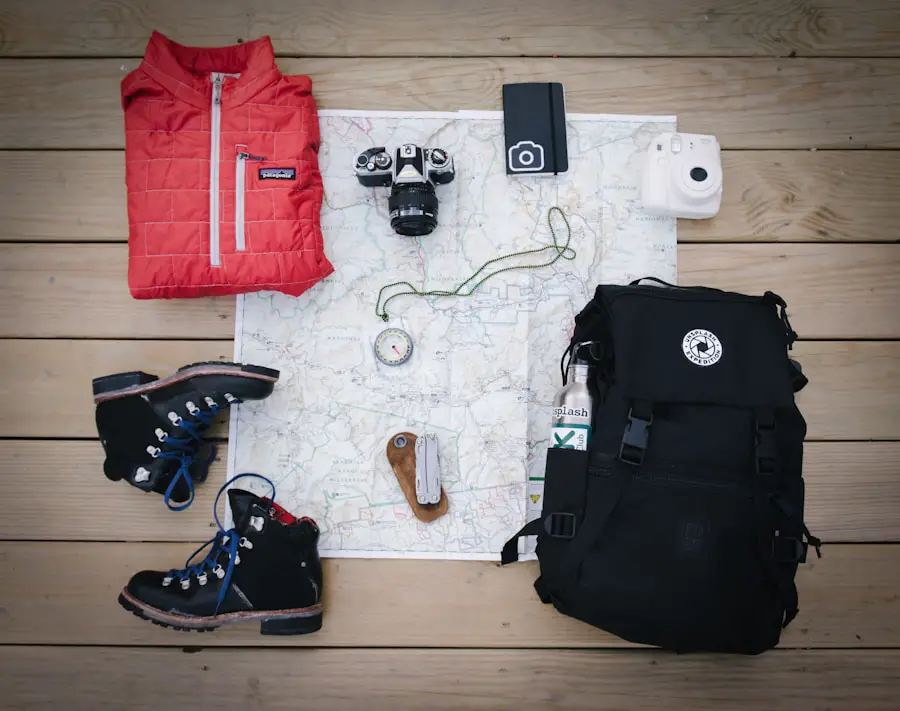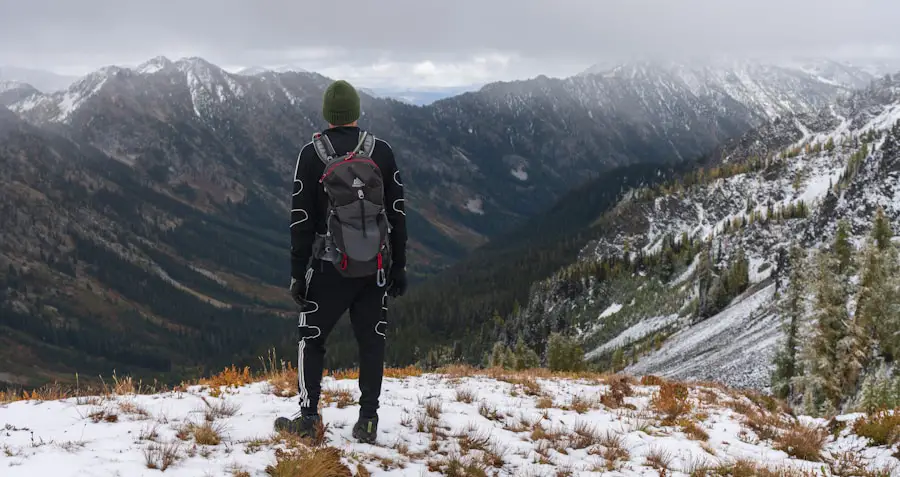Winter hiking presents a unique set of challenges that require careful preparation and consideration, particularly when it comes to clothing. The layering system is essential for maintaining comfort and safety in cold weather conditions. Unlike summer hiking, where a single layer may suffice, winter hiking demands a more strategic approach to clothing.
The primary goal of layering is to regulate body temperature, manage moisture, and provide protection against the elements. As hikers traverse varying terrains and altitudes, their bodies generate heat through physical exertion, which can lead to overheating if not managed properly. Conversely, when resting or in windy conditions, the risk of hypothermia increases if one is not adequately insulated.
Layering allows hikers to adapt to changing conditions throughout their journey. For instance, as one ascends a mountain, temperatures may drop significantly, necessitating additional insulation. Conversely, during a strenuous climb, the body may generate excess heat, requiring the removal of layers to prevent sweating.
This dynamic approach to dressing not only enhances comfort but also ensures that hikers can respond effectively to the unpredictable nature of winter weather. By understanding the principles of layering, hikers can enjoy their outdoor adventures while minimizing the risks associated with cold exposure.
Key Takeaways
- Layering is crucial for winter hiking to stay warm, dry, and protected from the elements.
- Choose a base layer made of moisture-wicking fabric like merino wool or synthetic materials for a snug fit.
- Fleece or down insulating layers provide warmth and insulation, with down being lighter and more compressible.
- An outer layer with windproof and waterproof features is essential for protection against harsh weather conditions.
- Don’t forget to accessorize with hats, gloves, and scarves to keep extremities warm, and invest in insulated boots and socks for footwear.
Base Layer: Choosing the Right Fabric and Fit
Fabric Selection
When selecting a base layer, the choice of fabric is paramount. Natural fibers like merino wool are highly regarded for their moisture-wicking properties and ability to retain warmth even when wet. Merino wool is soft against the skin, reducing the likelihood of chafing during long hikes. Additionally, it possesses natural odor-resistant qualities, making it an excellent choice for multi-day excursions where laundry facilities may be limited.
Synthetic Options
Synthetic fabrics such as polyester and nylon also serve as effective base layers. These materials are designed to wick moisture away from the skin and dry quickly, which is essential for maintaining comfort during high-intensity activities.
Fitting and Features
When choosing a base layer, fit is equally important; it should be snug but not restrictive. A well-fitted base layer will trap heat close to the body while allowing for freedom of movement. Look for options with flat seams to minimize irritation and consider long-sleeved tops and full-length bottoms for maximum coverage against the cold.
Insulating Layer: Staying Warm with Fleece or Down

The insulating layer is critical for retaining body heat in frigid conditions. This layer acts as a barrier against the cold air outside while trapping warmth generated by the body. Fleece is a popular choice for this layer due to its lightweight nature and excellent thermal properties.
Fleece jackets come in various thicknesses, allowing hikers to choose an option that best suits their activity level and the expected temperature range. The breathability of fleece also makes it an ideal choice for high-energy activities, as it allows moisture to escape while still providing warmth. Down insulation is another effective option for colder climates.
Down jackets are renowned for their exceptional warmth-to-weight ratio, making them a favorite among winter hikers seeking lightweight yet effective insulation. However, down loses its insulating properties when wet, so it’s essential to pair it with a water-resistant outer layer if rain or snow is expected. Synthetic insulation alternatives have emerged as well, offering similar warmth without the moisture sensitivity of down.
These materials can provide reliable insulation even in damp conditions, making them suitable for unpredictable winter weather.
Outer Layer: Protecting Against Wind and Water
| Product | Waterproof Rating (mm) | Breathability (g/m2/24h) | Windproof Rating (CFM) |
|---|---|---|---|
| Jacket A | 10,000 | 15,000 | 0.5 |
| Jacket B | 20,000 | 20,000 | 0.3 |
| Jacket C | 15,000 | 18,000 | 0.4 |
The outer layer serves as the first line of defense against harsh environmental elements such as wind, rain, and snow. A high-quality waterproof and breathable jacket is essential for winter hiking, as it protects against precipitation while allowing moisture from sweat to escape. Look for jackets made from advanced materials like Gore-Tex or similar technologies that offer both waterproofing and breathability.
These fabrics are designed to keep you dry from external moisture while preventing internal condensation from building up. In addition to waterproofing, wind resistance is another critical feature of an effective outer layer. Wind can significantly lower perceived temperatures, leading to rapid heat loss and discomfort.
A well-designed outer layer should have features such as adjustable cuffs, hems, and hoods to seal out cold air effectively. Ventilation options like pit zips can also enhance airflow during strenuous activities, allowing hikers to regulate their body temperature without compromising protection from the elements.
Accessories: Hats, Gloves, and Scarves
Accessories play a vital role in winter hiking by providing additional warmth and protection for extremities that are particularly susceptible to cold exposure. A well-fitted hat is essential for retaining heat since a significant amount of body warmth escapes through the head. Look for hats made from materials like wool or fleece that provide insulation while also wicking moisture away from the scalp.
Beanies with ear flaps or adjustable features can offer extra protection against biting winds. Gloves are another critical accessory; they should provide both warmth and dexterity for handling gear on the trail. Mittens tend to be warmer than gloves because they allow fingers to share warmth; however, gloves offer better dexterity for tasks like adjusting equipment or using trekking poles.
Many hikers opt for a combination of both: a thin liner glove underneath a thicker mitten or insulated glove for added versatility. Scarves or neck gaiters can also be beneficial in protecting the neck area from cold drafts while providing additional warmth when pulled up over the face during windy conditions.
Footwear: Insulated Boots and Socks

Footwear is one of the most critical components of winter hiking gear, as cold feet can quickly lead to discomfort and even frostbite in extreme conditions. Insulated boots are designed specifically for winter hiking and should provide adequate warmth while being waterproof to keep feet dry in snow or slush. Look for boots with features such as thermal insulation materials like Thinsulate or Aerogel that trap heat without adding excessive bulk.
Equally important are socks; they should be made from moisture-wicking materials that keep feet dry while providing cushioning and warmth. Wool socks are often favored for their natural insulating properties and ability to wick moisture away from the skin. It’s advisable to avoid cotton socks in winter hiking as they retain moisture and can lead to cold feet.
Layering socks can also be effective; consider wearing a thin moisture-wicking liner sock underneath a thicker insulating sock for added warmth without compromising fit inside your boots.
Backpack Essentials: Carrying Extra Layers and Emergency Supplies
When embarking on a winter hike, it’s crucial to pack extra layers and emergency supplies in your backpack. Weather conditions can change rapidly in winter months, making it essential to have additional clothing on hand should temperatures drop unexpectedly or if you become wet from snow or rain. A lightweight packable down jacket or an extra fleece layer can be lifesavers during unexpected stops or emergencies.
In addition to clothing layers, carrying emergency supplies is vital for safety on winter hikes. A first aid kit tailored for outdoor use should include items such as bandages, antiseptic wipes, blister treatment, and any personal medications you may need. A multi-tool or knife can be invaluable for various tasks on the trail, while a headlamp with extra batteries ensures visibility during shorter daylight hours typical of winter months.
Additionally, consider packing items like hand warmers, a space blanket, and a whistle for signaling in case of emergencies.
Tips for Adjusting Layers on the Trail
Adjusting layers on the trail is an essential skill that can significantly enhance comfort during winter hikes. As you begin your hike and your body warms up from exertion, it’s important to monitor your temperature closely. If you start feeling too warm or begin to sweat excessively, consider removing an insulating layer before you reach a point where you feel uncomfortable.
This proactive approach helps prevent moisture buildup that can lead to chilling once you stop moving. Conversely, when taking breaks or during descents where temperatures may drop quickly, be prepared to add layers back on promptly. It’s helpful to practice this adjustment process during training hikes so that you become familiar with how your body responds to different temperatures and exertion levels.
Additionally, consider using layers that are easy to put on or take off without removing your backpack; jackets with front zippers or pullovers with wide openings can facilitate quick adjustments without hassle. By mastering the art of layering and understanding how each component works together in winter hiking attire, adventurers can enjoy their time outdoors while staying warm and safe amidst the beauty of snowy landscapes.
If you’re planning a winter hiking trip, you’ll want to make sure you’re properly layered to stay warm and comfortable. Check out this article on
